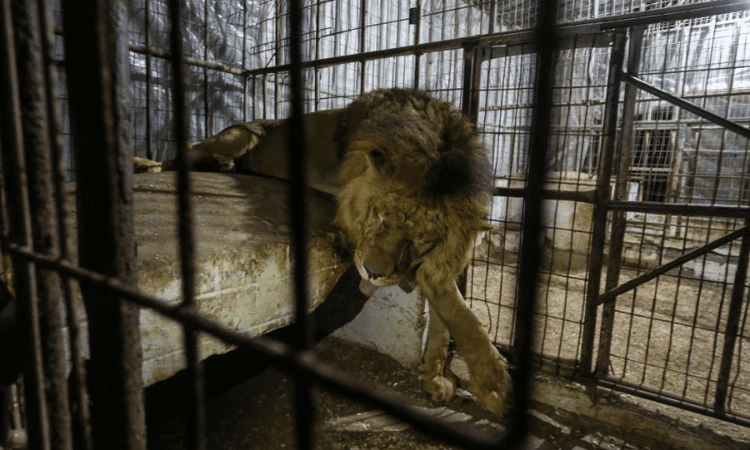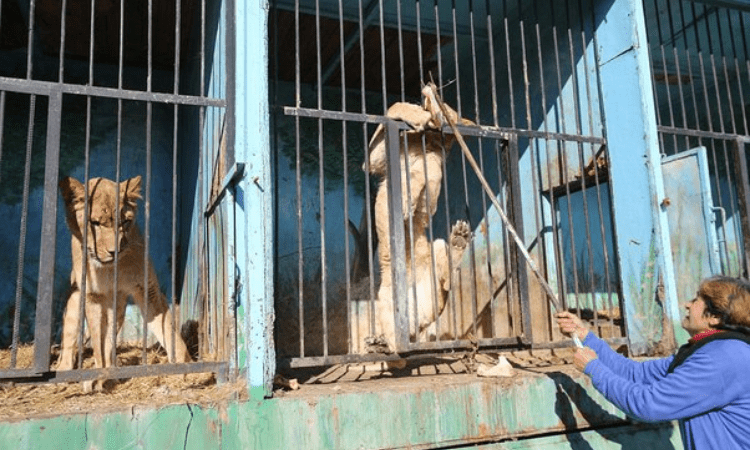Zoos Are Sad Places To Visit: Many people think that zoos are great places to take kids because they teach them about different animals and the environment. However, a more profound and frequently disregarded truth lies underneath the cheerful surface. Despite the zoo’s entertaining attractions, it can be sad for the animals and visitors alike. Let’s have a look at why.
The Illusion of Freedom:
The vast natural habitats that animals are designed to inhabit are in sharp contrast to the confined spaces seen in zoos. The illusion of freedom that animals feel in cages masks their fundamental need to roam and discover.
Impact on Animal Behaviour
Many animals suffer in captivity, and repetitive behaviors like pacing are a sign of stress. Stress, monotony, and an absence of mental stimulation are common causes of these inclinations.
The Effects of Feelings on Non-Human Beings:
All of the zoo animals, from the most graceful lions to the most active monkeys, seem to be emotionally exhausted. Being isolated from one’s usual social circle and having few interactions can lead to feelings of depression and loneliness.
Entertainment zoos and wildlife preserves
Zoos’ true purpose is still debated. Others argue that many areas prioritize entertainment over the protection of animals, while proponents of their role in conservation argue that they are crucial.
Visitors’ Perspectives vs. Reality:
The unseen struggles that exotic animals face in their cages are sometimes overshadowed by the excitement of close contact with them. One of the most important ways to learn empathy is to study the plight of captive animals.
Exploring Moral Alternatives: Moving Beyond Prisons
These days, with the help of environmental films and VR experiences, humans can engage with animals more ethically than in the past.
Impact on the Natural World:
Education is a powerful tool for influencing public sentiment. Zoos have the potential to serve as educational institutions by informing visitors about the plight of caged animals and the importance of preserving their native habitats. The use of resources, production of waste, and carbon footprint associated with these facilities’ operations all contribute to a more severe ecological effect.

A Request for Changes:
When we see the sadness in zoos, it makes us want to change how we treat animals and how we connect with them. The entertainment value of zoos needs to take a back seat to the well-being of the animals housed there.
Kindness Towards Captive Animals:
Collectively, we may learn about animals’ emotional lives and focus on developing empathy so that we can prioritize their physical and mental well.
The Optimism of Ethical Zoos:
As the shortcomings of traditional zoos have been recognized, ethical zoos have come into being. To keep the animals’ minds active and engaged, these establishments use enrichment techniques in big, natural surroundings.
Going Beyond Conservation of Captivity:
We may continue our conservation efforts in settings other than zoos. It turns out that the most compassionate and long-term solution is to fund initiatives that protect wildlife and their natural habitats in their environments.
A Purpose for Education:
Education is a powerful tool for influencing public sentiment. Zoos have the potential to serve as educational institutions by informing visitors about the plight of caged animals and the importance of preserving their native habitats.
Advocating for Responsible Tourism:
An important part of encouraging ethical tourism is choosing animal experiences that prioritize moral principles. Both animal welfare and the preservation of endangered species might benefit from this adjustment.
Ethically Uniting Humans and Animals:
The use of live-streaming from natural habitats and interactive exhibitions are examples of technological advancements. It can enhance human-wildlife contact without negatively impacting the animals’ well-being.
A Change in Direction:
In conclusion, a more caring and responsible relationship with animals. It can begin with the acknowledgment of zoos as potentially gloomy places. By prioritizing the well-being of wildlife and accepting ethically sound alternatives. We may create a world where all animals can live in harmony with humans.And for the enjoyment of wildlife that does not compromise their freedom or welfare.
When the knots at zoos are pulled taut. It reveals that these seemingly joyful places are carrying the weight of sadness for the animals kept there. By considering ethical considerations and the emotional toll that animals undergo, we may create a more compassionate approach to wildlife contact.
As a society, we must prioritize conservation efforts, and one way to do this is by evaluating the role of zoos and seeking out more caring alternatives.
I hope you like the part where we talked about Zoos Are Sad Places To Visit. For more content like this, visit our website EBDTravel.com.
